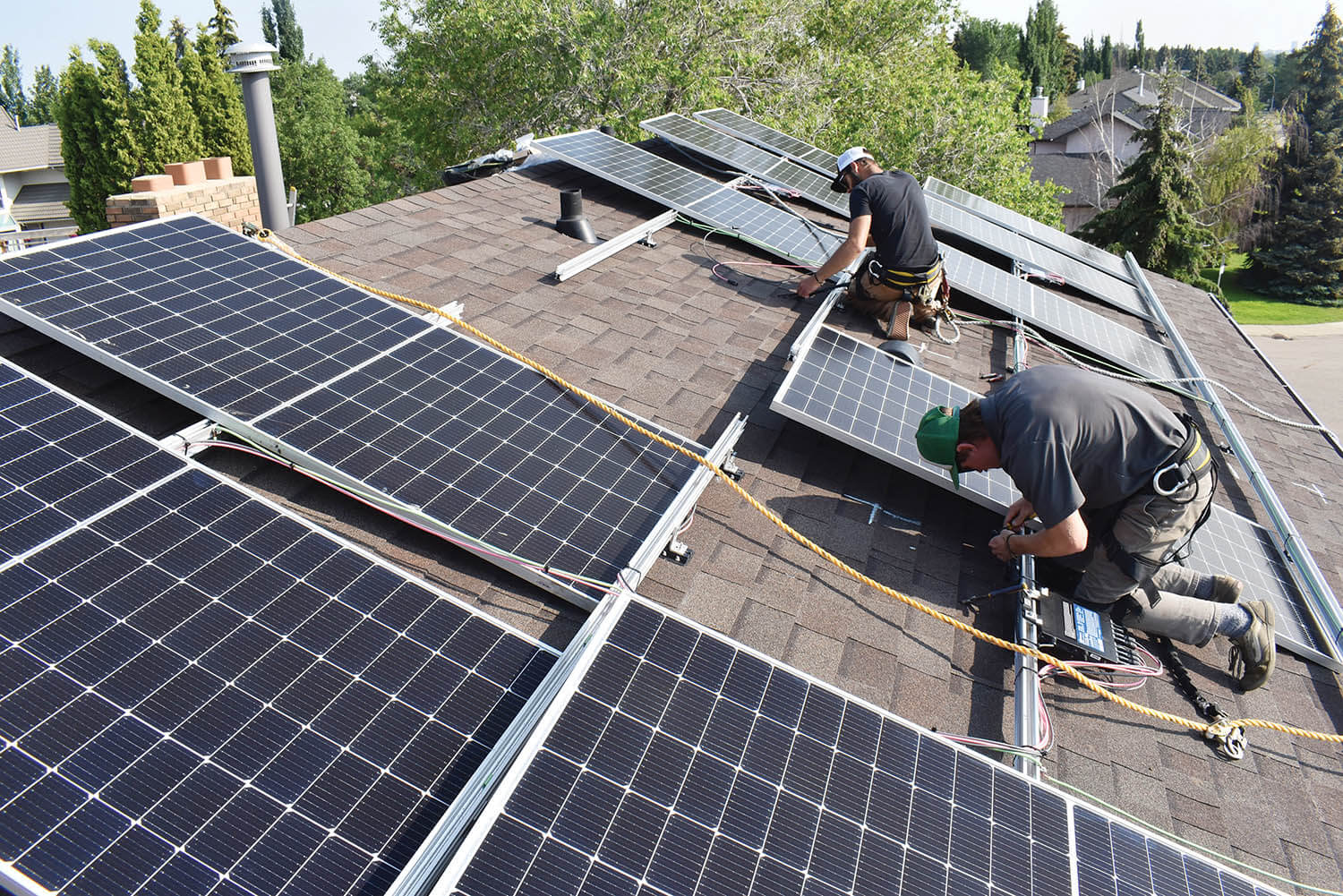I’ve never been an evangelist, but I’m fast becoming one.
I just had a 7.2 kilowatt solar panel array put on my home. The 16 solar panels are expected to produce 7,059 kilowatt/hours of electricity per year, or about 106 per cent of our consumption. The total installed cost was $19,000, but after rebates from the federal government and the City of Edmonton, it will cost us about $11,000. (Note, the City rebate has ended)
For someone in our position – home-owner, sundrenched roof, fiscal space to make the investment – solar panels are now an environmental and financial no-brainer.
From the green point of view, these panels immediately reduce our green-house gas emissions since our electricity is otherwise provided by burning natural gas or coal. They will prevent about 4.6 tonnes of carbon dioxide from entering the atmosphere each year. In terms of the carbon emitted in their manufacture and installation, that budget will be evened up within three years.
From the other green point of view, the panels will pay for themselves within seven years by reducing our electricity bill and generating revenue. We’ll produce more electricity than we need in the summer and sell it into the grid under Alberta Solar Club premium pricing for as much as 25 cents per kilowatt hour. In the winter, when we buy from the grid, we’ll pay the going rate of around 10 cents per kilowatt hour. As an investment, solar panels provide a return of 10-15 per cent per year, far higher than the average stock, bond or mutual fund (and don’t even talk to me about crypto). In addition, the value of the solar panels goes right into the value of our house.
The panels are guaranteed for 25 years, but should produce long after that. They are solid-state physics – no moving parts – so maintenance will be minimal. A bit of snow and ice doesn’t affect performance much, and we don’t get much performance in winter anyways: We’ll produce more in March than in November, December and January combined.
